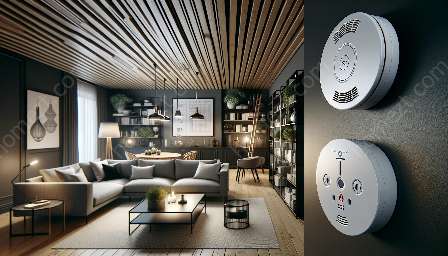In today's world, the importance of home safety and security cannot be overstated. Smoke detectors and fire alarms play a crucial role in safeguarding homes and occupants against fire hazards. Understanding the principles behind smoke detectors and fire alarms is essential for effective use and maintenance.
How Smoke Detectors Work
Smoke detectors are designed to sense the presence of smoke particles in the air, signaling the potential outbreak of a fire. There are two main types of smoke detectors: ionization and photoelectric.
Ionization Smoke Detectors
Ionization smoke detectors contain a small amount of radioactive material. When smoke enters the detector, it disrupts the current flow, triggering the alarm. These detectors are sensitive to fast flaming fires.
Photoelectric Smoke Detectors
Photoelectric smoke detectors use light sensors to detect smoke particles. When smoke enters the chamber, it scatters the light, which activates the alarm. These detectors are more responsive to slow, smoldering fires.
Fire Alarm Principles
Fire alarms are designed to provide early warning of a fire, allowing occupants to evacuate the premises safely. Key components of fire alarms include smoke detectors, heat sensors, control panel, and audible/visual notification devices.
Control Panel
The control panel is the brain of the fire alarm system. It receives signals from the smoke detectors and heat sensors and activates the alarm when necessary.
Audible/Visual Notification Devices
These devices sound an alarm and flash lights to alert occupants of a potential fire. They are essential for ensuring that everyone can hear and see the alarm, especially those with hearing or visual impairments.
Maintenance and Testing
To ensure the reliability of smoke detectors and fire alarms, regular maintenance and testing are imperative. This includes cleaning the detectors, replacing batteries, and conducting periodic inspections to ensure proper functioning.
Testing Smoke Detectors and Fire Alarms
Regularly test smoke detectors and fire alarms by pressing the test button to verify that the alarms are operating correctly. It's also crucial to replace batteries at least once a year and replace the entire unit every 10 years.
Conclusion
Understanding the principles of smoke detectors and fire alarms is essential for homeowners to prioritize home safety and security. By being knowledgeable about how these devices work and ensuring their proper maintenance, individuals can significantly reduce the risk of fire-related incidents and protect their loved ones and property.



